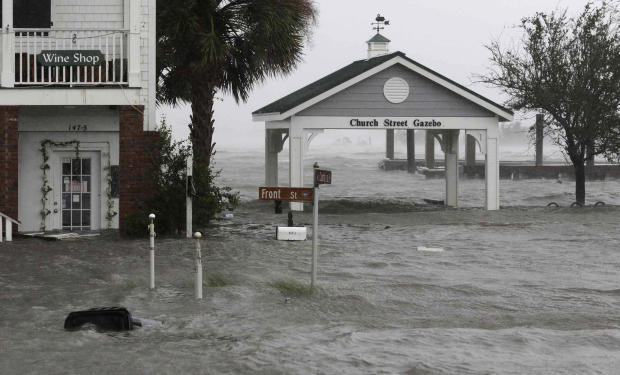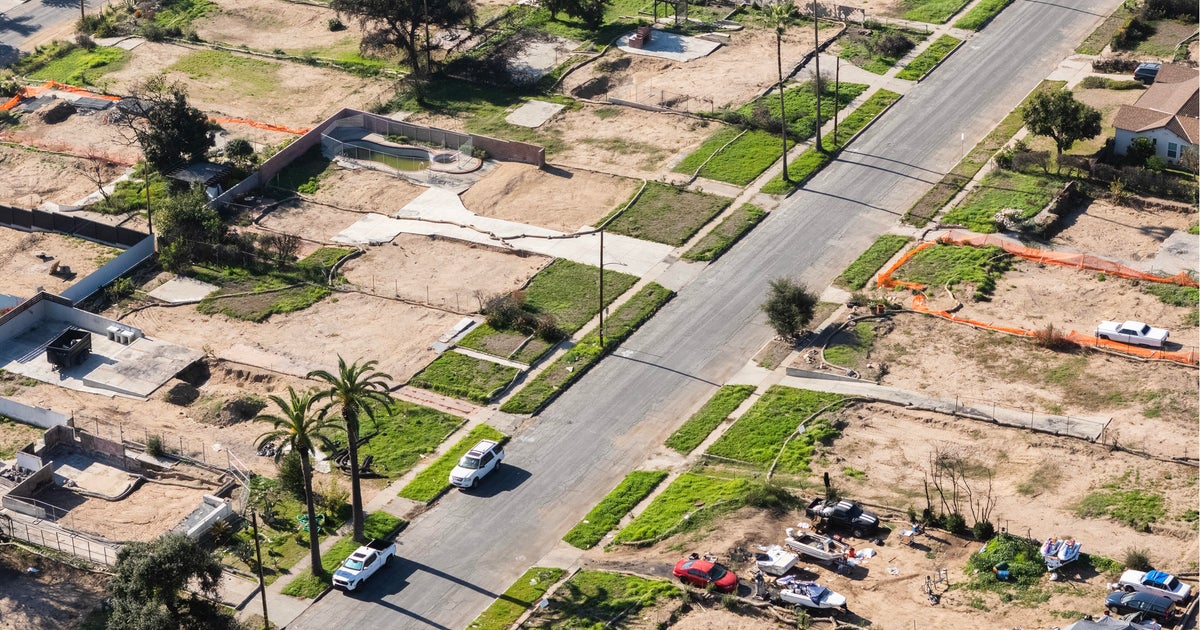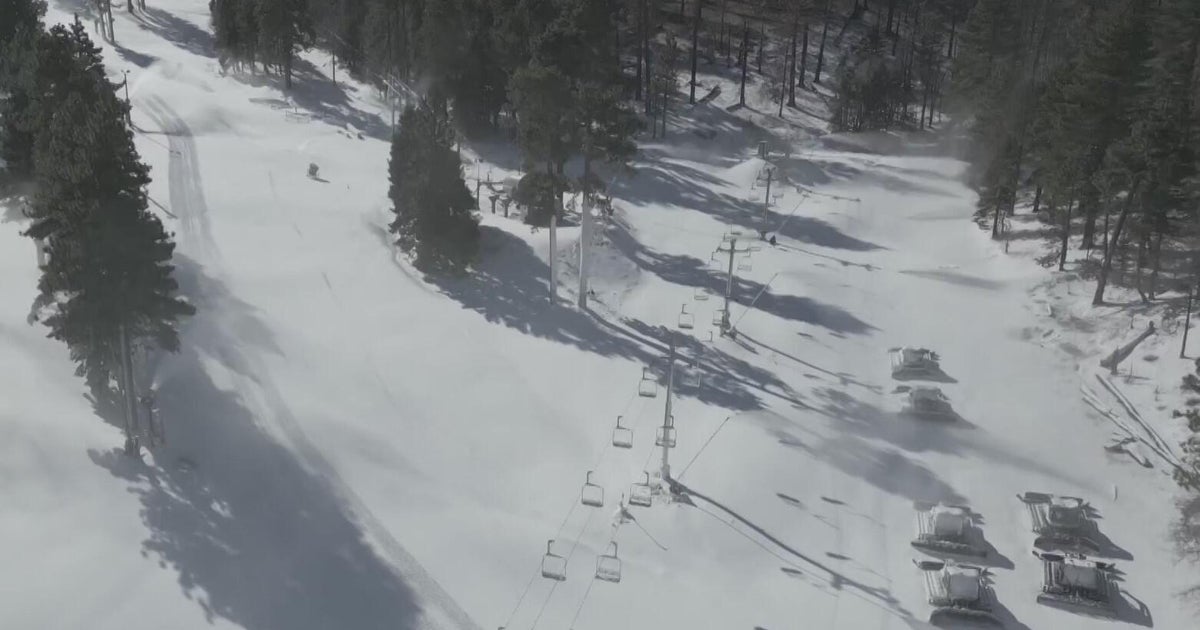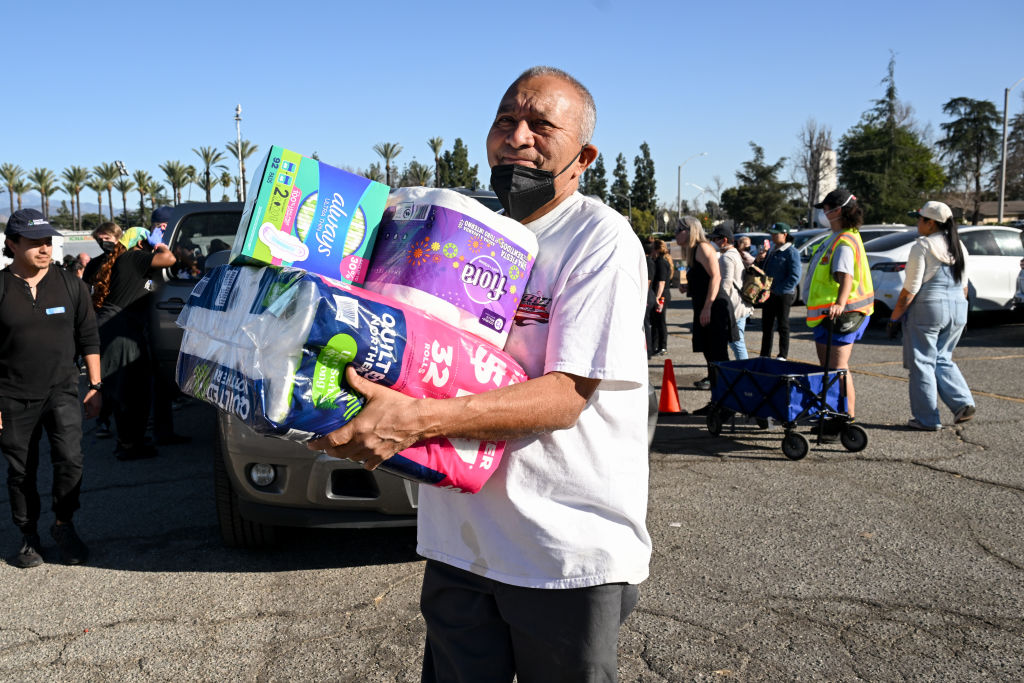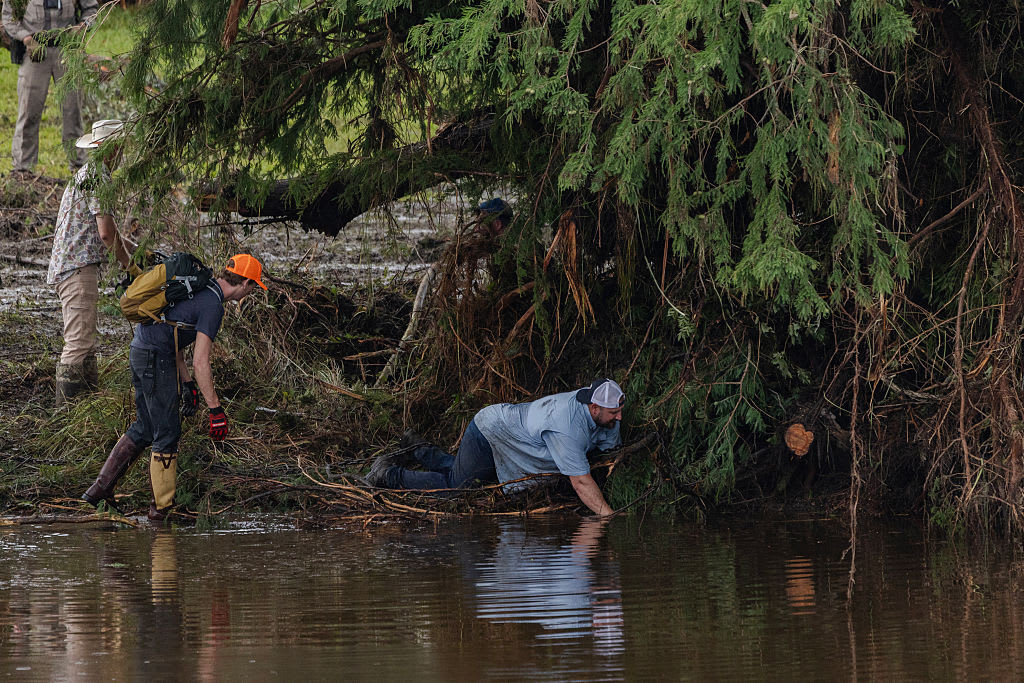Florence by the numbers: More than 30 inches of rain reported in Swansboro, North Carolina
MIAMI -- It's about the water, not the wind, as Florence makes an extended stay along the Carolina coast. The National Hurricane Center said Saturday that the tropical storm is continuing to cause "catastrophic flooding" in North and South Carolina.
Trillions of gallons of rain are still in the forecast.
How do you measure a disaster like Florence?
By The Numbers
- Location: at 2 p.m. Saturday, Florence was centered about 50 miles west of Myrtle Beach, South Carolina, moving west at 3 mph, the National Hurricane Center said
- Heavy rains: Florence could dump a staggering 18 trillion gallons of rain over a week on North Carolina, South Carolina, Virginia, Georgia, Tennessee, Kentucky and Maryland, meteorologist Ryan Maue of weathermodels.com calculated
- So far: More than 30 inches of rain was reported in Swansboro, on the North Carolina coast, and forecasters Saturday expected another 15 inches in parts of North and South Carolina
- Deaths: 17 people are confirmed dead from storm-related incidents. Earlier, 7 deaths were reported, but Amanda Tesch, a public information officer with Carteret County, North Carolina, said Emergency Services Director Stephen Rea was incorrect to categorize two deaths as storm-related
- Protected: More than 19,000 people in shelters in North Carolina, 6,400 in South Carolina and 400 in Virginia
- Rescues: More than 500 people needed help in high waters in New Bern and Jacksonville, North Carolina
- Going dark: About 900,000 outages as of Saturday morning, mostly in North Carolina, with Duke Energy anticipating 1 million to 3 million homes and businesses losing power
- Grounded: More than 2,400 flights canceled
- Potential losses: private meteorologists estimate $10 billion to $60 billion in economic damages
Toxic Sites
Dozens of polluted industrial sites, chemical plants, coastal shipyards and military bases are in Florence's path, along with scores of low-lying water and sewage treatment plants at risk of flooding. Environmental groups are worried hog lagoons and coal ash dumps that could contaminate soils or rivers used as sources for drinking water.
Scenic closures
The 470-mile Blue Ridge Parkway that winds through the Appalachians in Virginia and North Carolina closed at 8 p.m. Friday to vehicles, cyclists and pedestrians until further notice because of expected high winds and heavy rains. Hikers have been told to seek shelter off the Appalachian Trail to avoid falling trees, flash floods and mudslides.
South Carolina infrastructure
Torrential rains from Florence will test South Carolina's infrastructure, which failed under nearly 2 feet of rain in 2015. A year later, flooding from Hurricane Matthew caused about 25 dams to fail. More than 3,000 maintenance workers are on standby statewide to fix broken traffic signals, barricade problem areas and make roads safe again.
Rainfall
The National Weather Service tweeted a graphic that showed preliminary rainfall totals as of midday Saturday. The data are plotted on the following map. (Mobile app users click here):
